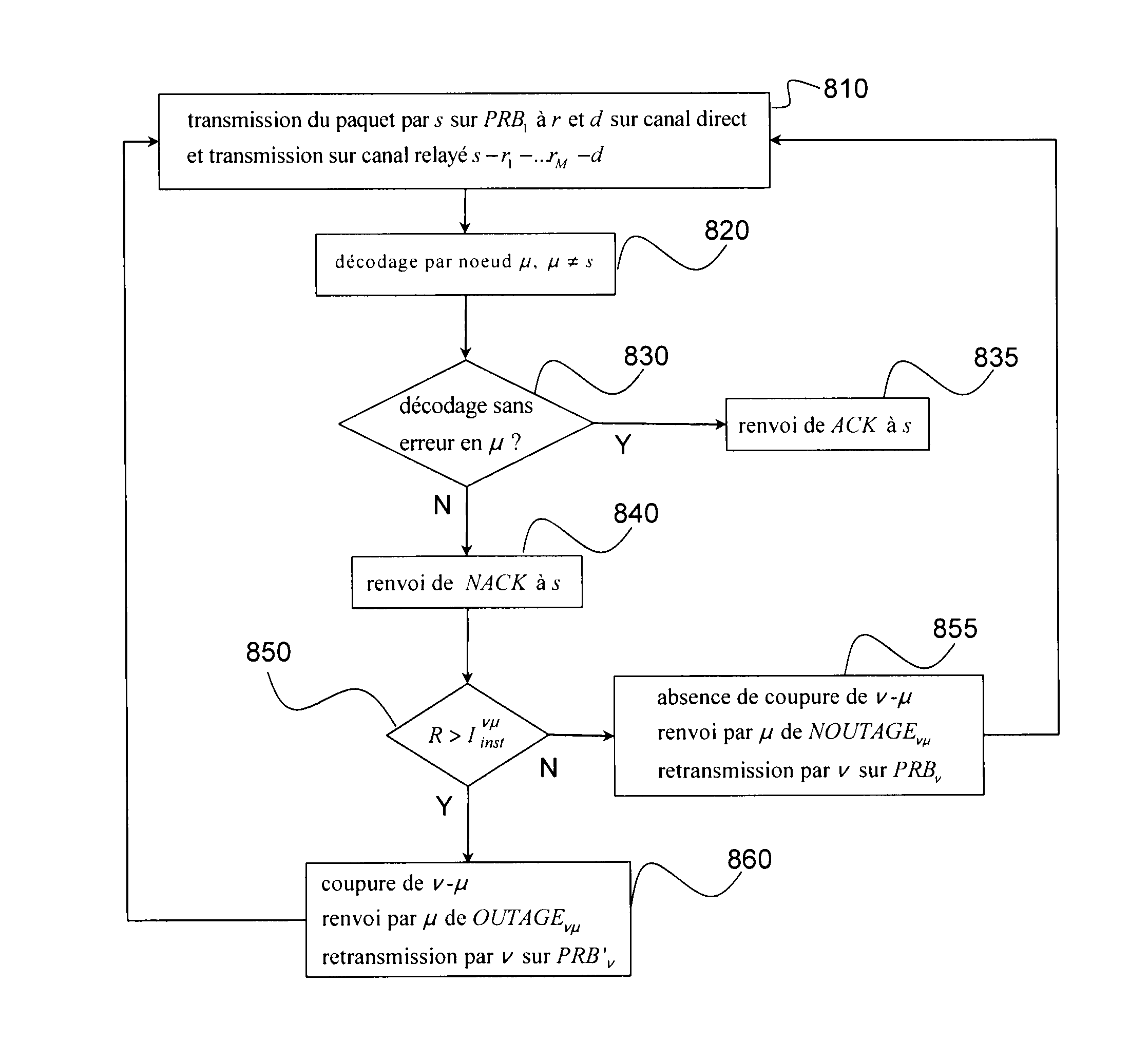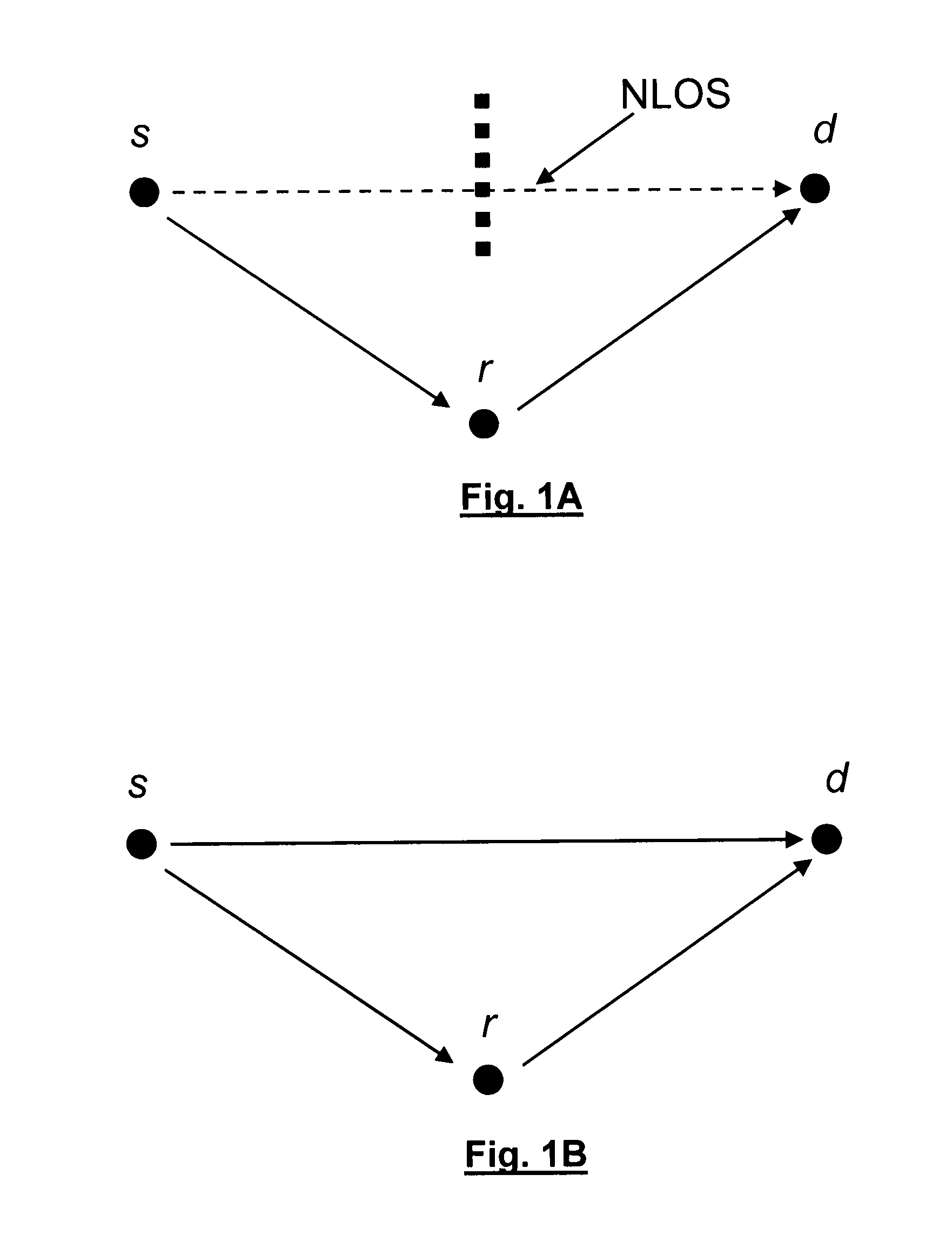Cooperative network with adaptive forwarding request policy
a cooperative network and request policy technology, applied in the field of cooperative communication systems, can solve the problems of weak limitations of proposed forwarding protocols, inapplicability of conventional arq and harq forwarding protocols, and the inability to directly apply them, and achieve the effect of reducing spectral efficiency
- Summary
- Abstract
- Description
- Claims
- Application Information
AI Technical Summary
Benefits of technology
Problems solved by technology
Method used
Image
Examples
first embodiment
[0118]In contrast to the first embodiment, herein the outage test advances from the source terminal to the destination terminal.
[0119]More precisely, in step 410, the source terminal will transmit a data packet to the relay terminal, on frequency resource PRB1.
[0120]In step 420, the data received at the relay terminal is decoded, and a determination is made in 430 whether the packet can be decoded without errors. If not, the process advances to step 480.
[0121]In contrast, if the relay terminal can decode the data without errors, it will transmit the same to the destination terminal by means of a frequency resource PRB2. The code used by the relay terminal may be identical (constrained coding) or not with the one used by the source terminal.
[0122]It is then tested in 450 whether the destination terminal has succeeded in decoding the data received from the relay terminal. If so, a message acknowledging correct receipt, ACK, is sent back to the source terminal in 455. In contrast, if t...
third embodiment
[0130]FIG. 5 illustrates a forwarding method in a cooperative network of the type of FIG. 1A, according to the invention.
[0131]The assumption is here that the cooperative network comprises a source terminal s, a destination terminal d, and a non-empty set of relay terminals, Λr. In general, the cooperative network can be considered as a directed graph the nodes of which are the terminals, the segments of which are the links between terminals, the direction of a segment being given by the direction of transmission.
[0132]The cooperation policy of FIG. 1A is going to be considered, in other words, there is a directed path nsd in the graph, starting at s and leading to d and going through an ordered sequence of relays {r1, r2, . . . , rM} with M≧1. Ω={s, r1, . . . , rM, d} is defined as the ordered sequence of the nodes of the path nsd, and Ωμ={s, r1, . . . , rμ-1} as the ordered sequence of the predecessors of the node μ, with the same relation of order as before. Conventionally, Ω1={s...
PUM
 Login to View More
Login to View More Abstract
Description
Claims
Application Information
 Login to View More
Login to View More - R&D
- Intellectual Property
- Life Sciences
- Materials
- Tech Scout
- Unparalleled Data Quality
- Higher Quality Content
- 60% Fewer Hallucinations
Browse by: Latest US Patents, China's latest patents, Technical Efficacy Thesaurus, Application Domain, Technology Topic, Popular Technical Reports.
© 2025 PatSnap. All rights reserved.Legal|Privacy policy|Modern Slavery Act Transparency Statement|Sitemap|About US| Contact US: help@patsnap.com



